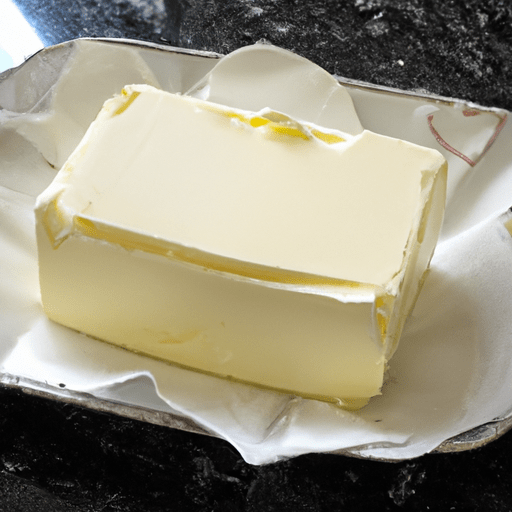Unsalted Butter: The Versatile Ingredient That Elevates Your Cooking
Butter, one of the most beloved ingredients in the culinary world, comes in many variations. From salted to clarified, each type offers unique qualities that enhance the flavors of your favorite dishes. In today’s blog post, we will explore the wonders of unsalted butter—its delicate taste, versatile uses, nutritional value, and a peek into its intriguing history.
The Taste of Pure Creaminess
Unsalted butter, also known as sweet butter, is a rich and creamy delight. Its subtly sweet and delicate flavor is the perfect canvas for any dish, allowing other ingredients to shine without overpowering them. With a higher percentage of butterfat compared to salted varieties, unsalted butter offers a pure taste that heightens the complexity of your culinary creations.
Unlocking Culinary Possibilities
Unsalted butter proves its versatility in an array of culinary applications. Its neutral taste and smoother texture make it an ideal ingredient for baking. From flaky pie crusts to tender cookies and moist cakes, unsalted butter helps achieve the perfect balance of flavor and texture in your baked goods.
When sautéing or pan-frying, unsalted butter lends a rich and smooth consistency to your dishes. It acts as a natural emulsifier, enhancing the flavors of sauces, basting meats, and creating luscious brown butter to drizzle over pasta or vegetables.
Unsalted butter is also a kitchen hero when it comes to creating luxurious and velvety sauces. A classic beurre blanc or a decadent hollandaise sauce made with unsalted butter elevates your dishes to gourmet heights.
Nourishment in Every Bite
While unsalted butter is undeniably a treat for the taste buds, it also offers some nutritional value. It is a rich source of vitamins A, D, and E, which are essential for maintaining healthy skin, bones, and overall well-being. These vitamins are fat-soluble, which means that the butterfat helps the body absorb these nutrients more effectively.
Additionally, unsalted butter contains conjugated linoleic acid (CLA), a naturally occurring fatty acid that studies suggest may have anti-inflammatory and weight loss benefits. However, moderation is key, as butter is high in calories and saturated fat.
A Glimpse into History and Fun Facts
Butter has a long and fascinating history, with its origins dating back thousands of years. The ancient Egyptians were among the first to churn butter from cow’s milk, while the Romans and Greeks used it for both culinary and cosmetic purposes.
In medieval Europe, butter was highly prized, and its production methods were carefully guarded secrets. Butter-making became a specialized craft, and it was common for each household to have its own churner. The tradition of churning butter continued through the centuries, evolving into the mass production methods we see today.
Did you know that the delicious golden hue of unsalted butter can vary depending on the diet of the cows? Butter made from cows that graze on fresh green grass tends to have a vibrant yellow color, thanks to the natural pigment called carotene present in grass.
Interestingly, the term “butter” originated from the Old English word “butere,” which may have been derived from the Greek word “boutyron,” meaning “cow cheese.”
In Conclusion
Unsalted butter is a versatile ingredient that adds a touch of richness and elegance to your culinary masterpieces. Its delicate flavor allows other ingredients to shine, making it a staple in both sweet and savory dishes. Remember to savor it in moderation, keeping in mind its calorie and fat content.
Whether you’re baking a delightful cake or creating a savory sauce, unsalted butter is sure to elevate your cooking to new heights. So, embrace the creaminess of unsalted butter and let your culinary creativity soar!
Unsalted Butter
Origin: Butter has been used as a cooking and baking ingredient for centuries, dating back to ancient times. The exact origin of butter is difficult to pinpoint, but it is believed to have originated in present-day Iraq around 4000 BCE.
Common Uses: Unsalted butter is a versatile ingredient used in a wide range of culinary applications. It is commonly used in baking to add richness, flavor, and moisture to cakes, cookies, and pastries. It is also used for sautéing, pan-frying, and making sauces. In addition, unsalted butter is often spread on bread or toast.
Nutritional Benefits: Unsalted butter is a good source of fat-soluble vitamins such as vitamin A, vitamin D, vitamin E, and vitamin K. It also contains trace amounts of essential minerals like calcium, phosphorus, and selenium. However, it is important to consume butter in moderation due to its high saturated fat content.
Unique Properties: Unsalted butter is primarily composed of butterfat, milk solids, and water. It has a rich, creamy texture and a mild, slightly sweet flavor. Unlike salted butter, unsalted butter does not contain added salt, which allows for greater control over the saltiness of a dish when cooking or baking.
Historical Significance: Throughout history, butter has played an important role in various cultures and cuisines. In ancient Rome, butter was used for both cooking and medicinal purposes. In medieval Europe, butter was a luxury item often reserved for the wealthy. Over time, butter became more accessible and widely used in culinary traditions around the world.




Use the share button below if you liked it.
It makes me smile, when I see it.